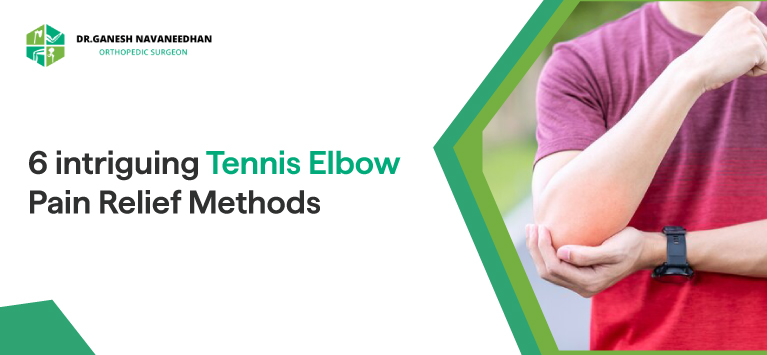- +91 62384 78716 +91 99475 78797
-
Sasthamangalam, Trivandrum
Sasthamangalam, Trivandrum

Tennis is a wonderful sport that requires endurance, strength, accuracy, and agility. However, with regular training and playing, so-called “tennis pain” (also called ulnar epicondylitis) can occur, which gives a sensation of pain in the elbow and can limit the movement of the arm.
Most cases of epicondylitis ulnaris can be treated at home with several effective treatments. In this article, you will look at the signs and symptoms of tennis player pain, its causes, and the most effective and simple methods for treating and preventing this disease.
Tennis players often have to deal with elbow pain, known as tennis elbow, due to overexertion of the muscles and tendons around the elbow joint. An elbow disorder affects approximately 30% to 50% of tennis players. Officially known as lateral epicondylitis of the humerus, it is also known as tennis elbow because it is more common in tennis players.
Tennis elbow pain is a common condition characterized by severe discomfort and limited movement. The main symptoms of this disease are:
If at least one of these signs appears, doctors recommend contacting a specialist and not postponing treatment until later.
Mild cases of tennis elbow can heal in a few weeks, but more severe cases can take longer. Most people do not feel pain if they rest, but it is difficult to rest all the time. Here are some ways to relieve tennis elbow pain.
Do the icing – Since tennis elbow is thought to be caused by muscle inflammation, it is effective to cool the affected area when it is inflamed. Especially for tennis elbow, you can expect pain relief by combining it with a massage. However, if it is chronic, icing will have the opposite effect, so be careful.
Do some stretching – Stretching your wrist is an effective way to relieve tennis elbow pain. Extend your arm straight while keeping your palm facing up and your elbow extended; grab your fingers with the other hand and slowly bend your wrist down. Hold for 15 seconds when you feel a stretch in the muscle, and slowly let go.
Wear a supporter – In tennis elbow, blood is sent to abnormal blood vessels that should not be there, which is thought to be the cause of the pain. There is an aim to relieve pain by disturbing the. The supporter should be attached to the wrist about 5 cm around the painful area. If the supporter is wrapped loosely, the effect will be diminished, so tighten it appropriately so that the affected area is firmly compressed.If you don’t have a supporter, you can expect some pain relief even with taping. As with the place where the supporter is wrapped, wrap the tape around the wrist about 5 cm from the painful place and check if the pain is alleviated. However, taping is only a substitute for supporters. First of all, please prepare a supporter as soon as possible while receiving treatment at a hospital such as orthopedic surgery.
Physiotherapy – In the treatment of tennis elbow pain, physiotherapy is used to restore muscle tone and improve blood circulation, which helps to reduce pain. Physiotherapy treatments include ultrasound and electrical treatments, which can improve blood flow and reduce inflammation. In addition,
Review play style – It is best to refrain from playing tennis while you have elbow pain, but as a preventive measure after the pain subsides, it is also effective to review your playing style and the racket you are using. For example, a person who used to hit the backhand with one hand can reduce the burden on one arm by simply changing to a two-handed backhand.
Acupuncture- Acupuncture can also be used as a remedy to relieve muscle tension and relieve tennis elbow pain.
In conclusion, tennis elbow is a discomforting condition that can impact anyone with repetitive arm movements, not just tennis players. The pain and limitations it imposes can be managed effectively through strategies like icing, stretching, supports, physiotherapy, Acupuncture, and adjusting one’s play style. Whether you’re an athlete or someone dealing with the rigors of daily life, these methods offer relief and restoration of elbow function. If tennis elbow persists or worsens, seeking medical advice from a qualified doctor is crucial. Don’t let this condition hinder your lifestyle – take action, explore these relief methods, and reach out to a doctor for personalized guidance.
Copyright © 2025 Dr. Ganesh Navaneedhan. All Rights Reserved. | Designed By Harvee healthcare